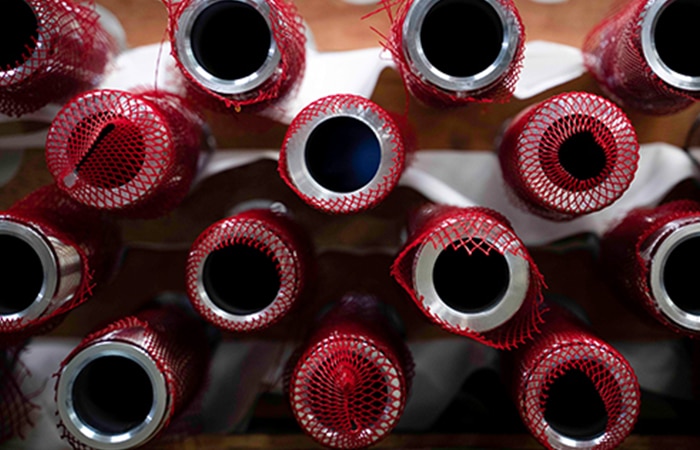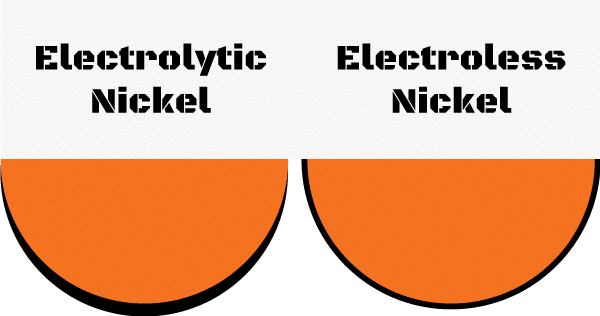
When it comes to plating with nickel, there are two main ways to go about it – electroless and electrolytic. Both methods have their benefits, but which one is right for you?

Here at Karas Plating, we only provide an electroless plating service. Our decades of experience in the metal finishing industry – both in the North West and across the UK – have convinced us that this is the more effective technique.
Here are just some of the reasons why…
What is electroless plating?

Electroless plating – also known as autocatalytic plating – is a simple plating process. The substrate is lowered into a solution bath, triggering a chemical reaction that deposits metal particles in the solution onto the base material.

What are the benefits of electroless plating?

There are many benefits to electroless nickel plating (ENP). These are some of the more common advantages enjoyed by our clients.
Uniformity
Electroless plating results in a thinner deposit than electrolytic plating. This coating is also applied more evenly to the components in the solution. This makes ENP a highly effective coating technique for micro-components and other small pieces.
Durability
The layer of nickel desposited by the electroless process may be thinner, but it is generally of a higher quality. This adds greater protection to the substrate, increasing its durability and resistance against abrasion and corrosion.
Adheres to any substrate
Since it doesn’t require an electrical current, electroless plating can be used to adhere to any kind of material, not just conductive metals. This gives the process far greater versatility than electrolytic plating.
Are there any disadvantages to electroless plating?

The only disadvantage to the electroless process is that the solution needs to be monitored throughout to ensure that its concentration of metal ions is kept topped up. Since we monitor all our plating process in any case to ensure quality across the board, this hardly qualifies.
What is electrolytic plating?

Electrolytic plating uses electricity and an electrolyte solution to complete the process. An electrical current is passed through the substrate and a piece of the metal used for plating. This draws metal ions from the solution, depositing them on the substrate.

What are the benefits of electrolytic plating?

The main advantages of electrolytic plating are that it’s faster and cheaper than its electroless equivalent. As a professional plating company, we’re not going to deny that. However, these benefits come with significant disadvantages.
Are there any disadvantages to electrolytic plating?

The are several downsides to using an electrolytic plating process, which we believe outweigh the slight benefits it confers. Here are the ones most likely to affect our clients:
Limited Base Materials
To utilise electrolytic plating, your substrate needs to conduct electricity, which can limit the possible applications of this process.
Less durability
The electrolytic process does not create as strong a coating as its electroless counterpart. This makes it less resistant to both abrasion and corrosion – key requirements for most plating clients.
COating Variations
Whereas electroless plating produces an even coating across your substrate, electrolytic plating can produce a less even distribution. Joints and corners can see a build-up of metal ions, resulting in thicker deposits.



